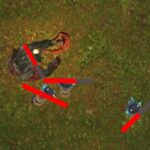Defense Games – Strategic Frontlines Where Tactics Shape Survival 🛡️
Defense Games are digital arenas where players must outthink, outplan, and outlast wave after wave of incoming threats. These games ask a fundamental question: How well can you defend? Whether it’s protecting a fortress from invading orcs or securing a futuristic base from alien swarms, defense games demand strategic positioning, resource optimization, and real-time decision-making.
Their appeal stretches across platforms and generations, from early classics like Rampart and custom Warcraft III mods to mobile staples such as Kingdom Rush, Bloons TD, und Pflanzen gegen Zombies. The genre is no longer a niche category—it’s a cornerstone of mobile and web-based gaming ecosystems, known for its accessibility and cerebral gameplay.
🏗️ Key Mechanics of Defense Games
The defense genre revolves around Gebäude, planning, and holding your ground. The gameplay loop is often simple, but the decisions within each round can be complex and deeply tactical. These mechanics make the genre approachable and rich in strategic complexity for long-term mastery.
Core elements commonly found in defense games:
- Structured Wave Progression
Enemies arrive in timed waves, with increasing strength, speed, or ability types. Each round raises the stakes. - Tower or Unit Placement Strategy
Players must assess terrain, pathing, and timing to place units or towers where they’ll maximize impact. - Resource Allocation & Upgrades
Players gain points, gold, or energy to upgrade or unlock new defensive tools between or during rounds. - Enemy Variants and Counterplay
A mix of flying units, armored tanks, stealth troops, or bosses forces players to diversify their defenses. - Terrain & Pathing Management
Some games allow players to alter the landscape or build maze-like routes to slow and reroute enemies.
🧩 Sub-genres Within Defense Games
The genre’s evolution has created multiple sub-styles, each appealing to different tastes and skill levels:
- Klassisch Turmverteidigung
Players defend fixed lanes with buildable towers. Strategie revolves around positioning and upgrade efficiency. - Reverse Tower Defense (Offensive Defense)
Players send units through enemy defenses, as seen in games like Anomaly: Warzone Earth. - Hybrid Defense Titles
These merge real-time strategy, Rollenspiel elements, or FPS mechanics—Sanctum und Dungeon Defenders are prime examples. - Base Management Defense Games
In these games, players manage entire facilities under siege, often with limited workers or energy systems (They Are Billions, Oxygen Not Included).
In Defense Games, every decision matters. Each upgrade, each placement, each split-second reaction contributes to whether your defenses hold—or collapse. This genre rewards players who think ahead, adapt under pressure, and value planning over reflexes. From fine-tuning fortress setups to juggling scarce resources during the final wave, players constantly face tactical scenarios that push their planning and decision-making skills to the limit.












































































